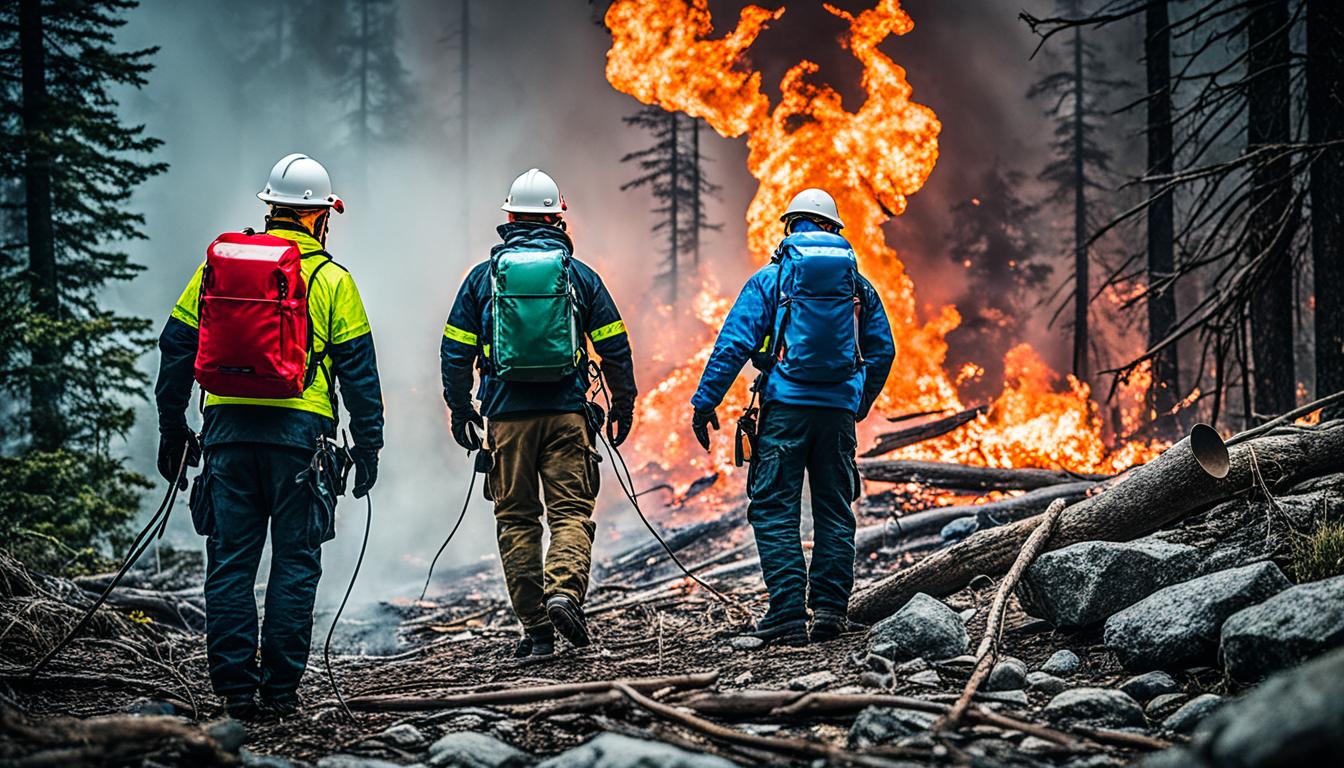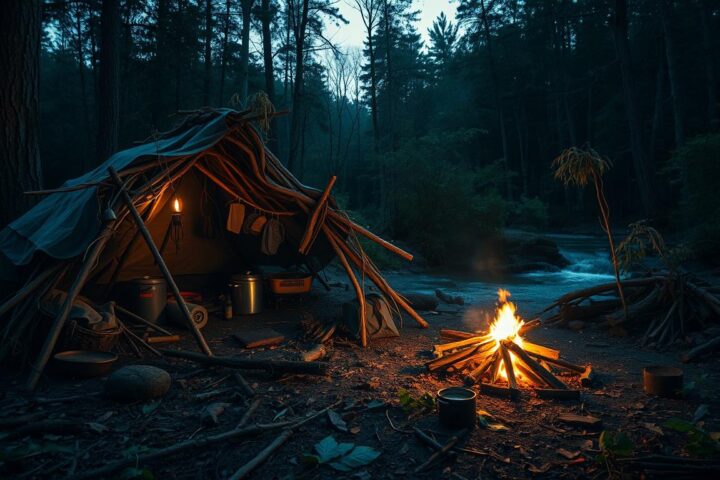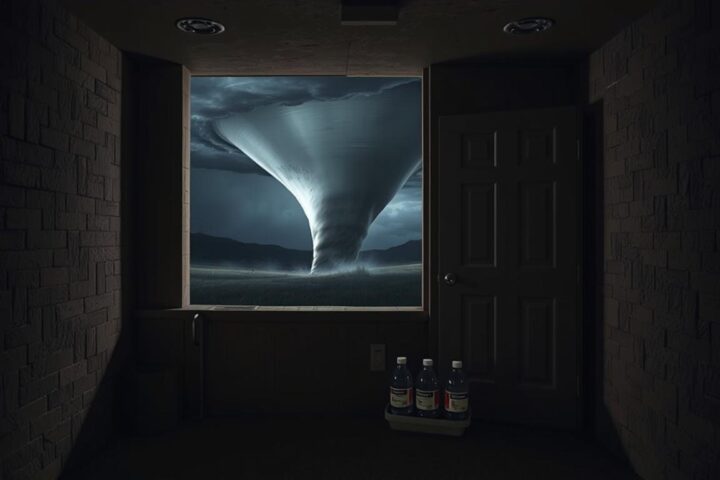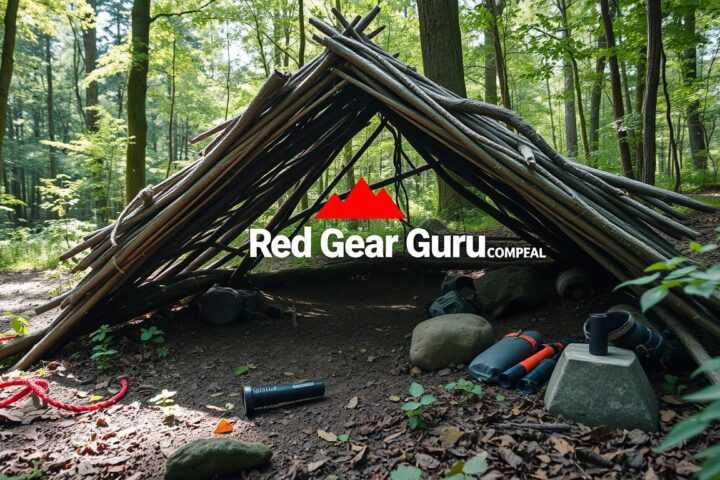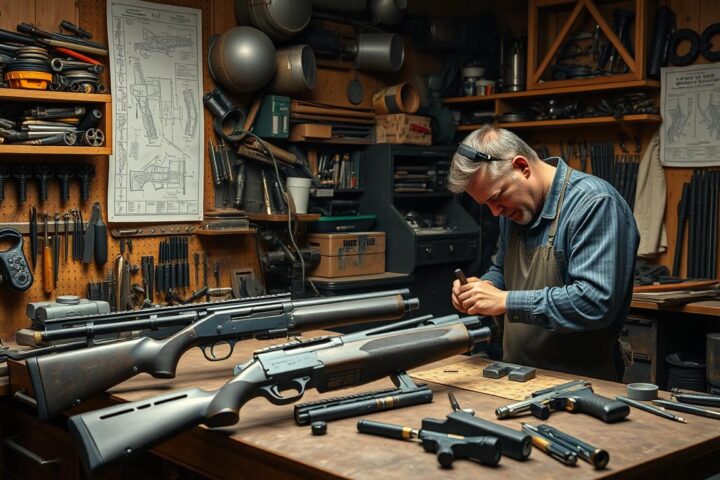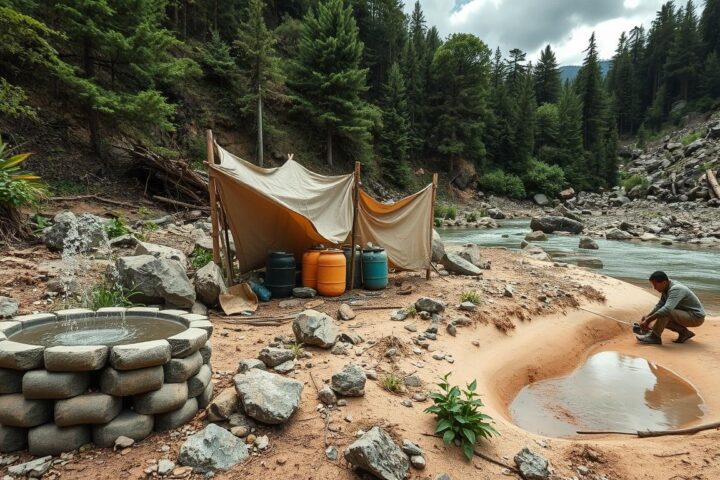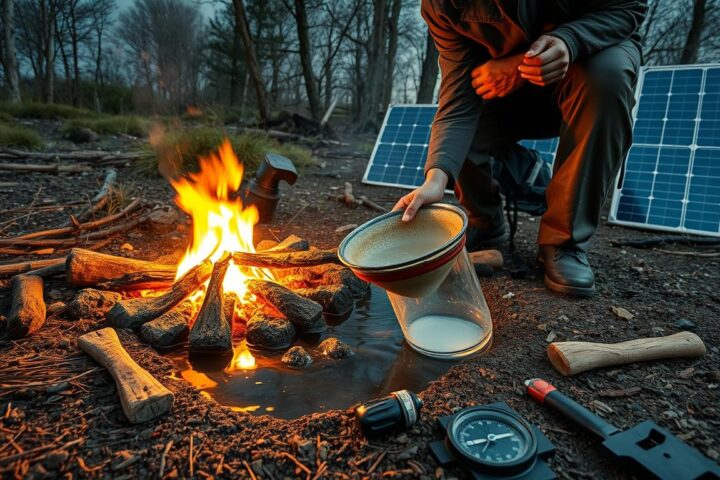When disaster hits, are you ready to call for help? Knowing how to signal for rescue can be a lifesaver. But what are the best ways to get noticed? From high-tech gadgets to old-school tools, being seen and heard is key to safety.
What should you pack in your emergency kit for signaling? Check out the wide range of emergency signaling methods that could save your life quickly.
The Importance of Emergency Signaling
Emergency signaling is key to staying safe and alive in tough times. When you’re in danger, signaling for help can be a lifesaver. It helps you get noticed from far away and connect with people who can help.
Using a signal like the S.O.S. pattern (three dots, three dashes, three dots) is a worldwide standard. Also, blowing a whistle three times is a signal for help everywhere. At sea, three horn blasts means you need urgent help.
Being ready and knowing what to do can really help you stay safe in emergencies. Studies show that being prepared and knowing survival skills is key to getting through crises well.
Visual signals like flares and lights are great for getting attention in any light. Red flares work day and night, and electric lights are best at night. Whistles and sirens are good for signaling close by.
Tools like cell phones, radios, and emergency systems help you stay in touch and get help fast. Making a plan before an emergency is important for working together and responding well.
Learning about emergency signaling and being ready with the right tools can really up your chances of survival. It keeps you safe in unexpected situations.
Visual Signals: Fire, Smoke, and Flares
Visual signals like fire, smoke, and flares are key in emergency situations. They grab attention and help send out distress signals. Fire can be used to make a visible flame. And, flares emit bright light that is highly visible. These signals work well during the day and at night, making them a dependable choice in emergencies.
International distress signals suggest building three fires in a triangle or line, with fires about 25 meters apart. This makes them more visible. Pen flare devices can launch flares up to 150 meters high, perfect for emergencies. The whistle, another key signal, can be heard up to 1.6 kilometers away, helping with close-up signaling.
The U.S. Coast Guard says boaters must carry approved visual distress signals. These include both pyrotechnic and non-pyrotechnic devices. Pyrotechnic signals last 42 months, and it’s important to check their expiration dates. Handheld flares or gun-launched meteors are the top choices for meeting Coast Guard standards.
Tests show that handheld Coast Guard-approved flares may not work well in daylight. But orange smoke devices are the best for daytime signals. Aerial flares have a short burn time and might not be seen well in daylight. Yet, SOLAS parachute flares can burn for up to 43 seconds, making them a better choice for offshore or remote areas.
Audible Signals: Whistles and Sirens
In emergencies, tools like whistles and sirens are key for getting attention and calling for help. Whistles make a loud, clear sound that can be heard far away. They’re great for short-range signals. Sirens are even louder and grab attention fast. They’re often used by emergency vehicles to signal urgent situations.
Whistles are super useful in the wild, helping to get the attention of people who can help you. A survey by the Maritime and Coastguard Agency showed that over 80% of maritime workers think whistles are good for emergencies. Also, 95% said knowing how to use whistles makes work safer.
Sirens are linked with emergency teams like police, fire, and ambulance. They’re really loud and cut through noise to warn people of an emergency. This makes them a key part of signaling in crises.
When using a whistle or siren, make sure it’s loud enough to be heard. Make sure it clearly signals distress. Adding these signals to your emergency plan can really up your chances of getting help fast.
Communication Devices: Staying Connected
In emergency situations, having the right communication devices is key. Cell phones, two-way radios, and emergency alert systems help you stay in touch and call for help. They are vital whether you’re in a well-covered area or facing a total loss of service.
Cell phones are often the first choice for calling for help. But in emergencies, cell networks might get too busy or fail. That’s when two-way radios step in. These devices work over long distances, even without cell service, letting you contact emergency responders or talk with your group.
Emergency alert systems are also crucial. They give updates, evacuation orders, and important info during a crisis. By listening to these alerts, you can make smart choices to protect yourself and your family.
Devices like telecommunication tools and public safety radios are key for effective communication in emergencies. They help coordinate rescue efforts and share important info. These technologies are vital for staying in touch and boosting your survival chances.
Having the right communication tools ready can change everything in a crisis. By being ready and knowing how different devices work, you can stay connected and get the help you need.
emergency signaling methods: Planning and Preparation
Getting ready for emergencies is key, and having a solid emergency communication plan is essential. First, identify important people like first responders, government groups, and local organizations. Make sure you have many ways to contact them. Regular drills and planning for different help everyone know what to do in an emergency.
Make sure your emergency plan covers many possible situations, like natural disasters or accidents at work. Do a detailed risk check to see what threats are most likely and how to deal with them. Use a risk matrix to sort risks by how likely they are and how big the impact could be. This helps decide where to put your resources.
Build a team with experts from different areas, like managing incidents and handling utilities. Always check and update your plan to keep up with new threats, like active shooters or cyber attacks. Make sure your communication plan is clear and easy to find, so you can use it quickly in an emergency.
Good emergency signaling comes from careful planning and getting ready. By focusing on who needs to be contacted, how to communicate, and how to respond, you can boost your chances of a successful rescue and recovery in emergencies.
Night Signaling Techniques
Emergency signaling is key in both day and night. [http://tac.tui.mybluehost.me/best-concealed-carry-holsters-2/ Visual distress signals] like night signaling flares and chemical light sticks are vital in the dark. They send out bright light to get attention and show you need help.
Night signaling flares give a strong, brief light that’s easy to see from far away. Chemical light sticks, however, keep glowing for a long time. Adding these methods to your emergency plan helps you signal your location and status when it’s dark.
Using visual signals with other methods, like making noise or using devices, can help get you help faster. Whether it’s a medical emergency or you’re lost, good night signaling can make a big difference. It could mean the difference between a successful rescue and a bad outcome.
Being prepared and practicing is important for night signaling. Learn how to use flares, chemical light sticks, and other lights correctly. This way, you can signal effectively in the dark. Remember, signaling well can save your life in an emergency.
Short-Range and Long-Range Signaling
In emergency situations, knowing how to signal for help is key. Using both short-range and long-range methods can boost your rescue chances. For short-range signaling, visual signals like fires, smoke, and flares work well if someone is close by. Audible signals, such as whistles and sirens, are also good for short distances.
For long-range signaling, methods like mirrors, flares, and ground-to-air signals are crucial. These help catch the eye of rescuers or aircraft from far away. Flares, for instance, can last three years and be seen up to 10 nautical miles at night, making them a top choice in emergencies.
It’s important to know the strengths and limits of these signaling methods. Short-range signals are great for some situations, while long-range is better for alerting rescue teams or aircraft from afar. Having a mix of signaling tools can greatly increase your chances of being found and saved in an emergency.
Improvised Signaling Methods
Emergency signaling isn’t just about using commercial products or pre-designed methods. You can make your own signals using things around you. For example, use bright clothes or tarps to signal from the ground to the air. Mark trails with survey tape or reflective stuff. And, use smoke, fire, and natural elements to get attention.
Being creative and using what you have is key to good improvised signaling. This way, you can make your signals more visible and grab more attention. This increases your chances of being seen and rescued in an emergency.
- Use brightly colored clothing or tarps to create ground-to-air signals that can be seen from above.
- Mark trails with survey tape, reflective materials, or other markers to guide rescuers to your location.
- Utilize smoke, fire, and other natural elements to create attention-grabbing signals that can be seen from a distance.
- Experiment with different combinations of materials and techniques to find the most effective improvised signaling methods for your specific situation.
The main aim of improvised signaling is to get noticed and rescued. By being creative and using what you have, you boost your survival chances. This ensures help comes when you most need it.
Ground-to-Air Signaling
In an emergency, getting the attention of aircraft and rescue teams is crucial. Ground-to-air signaling helps in such situations. By making large, visible symbols on the ground, like an SOS, you can be seen from the air.
Using bright colors, contrasting materials, and precise placement is key. This makes sure the signals are clear from above. Reflecting sunlight with mirrors can also create signals that stand out from a distance.
International rules say raising arms means you want to be picked up. Lying down with arms out means you need medical help. Military signs must be at least 5.5 meters tall to be seen from planes.
Whether it’s a sea rescue or a crisis on land, knowing how to signal for help is vital. Learning different techniques and tools can help you signal when it’s most important.
- Creating three fires in a triangle or line at night for signaling
- Using mirrors or shiny things to flash signals up to 160 kilometers away
- With flashlights or strobe lights, send distress signals at night
- Using the orange side of a VS-17 panel for better air visibility
- Deploying sea dye markers in daylight on water or snow
Learning these ground-to-air signaling methods can boost your chances of being seen and getting help in an emergency.
Conclusion
Knowing how to signal for help is key to staying safe and getting rescued in an emergency. By learning different ways to signal, like using visual and audible signals, you can boost your chances of being found.
Make sure to include emergency signaling tools in your safety plans. Practice these skills often. Knowing how to use the SOS signal, flares, and PLBs can save your life in an emergency.
For those who love diving or spending time outdoors, having the right signaling devices and survival skills is crucial. With the right strategies and tools, you can stay safe and get help quickly when it matters most.
